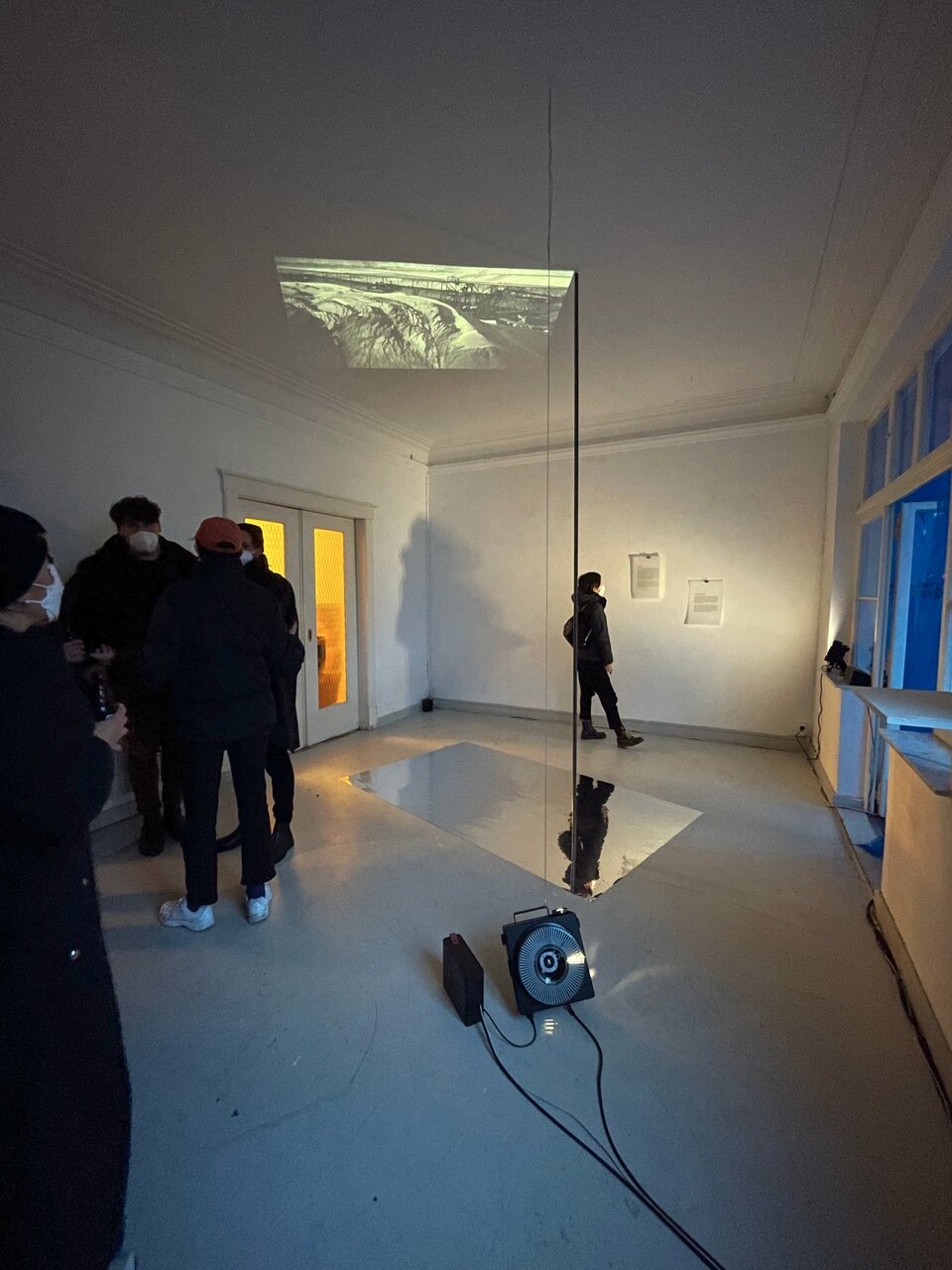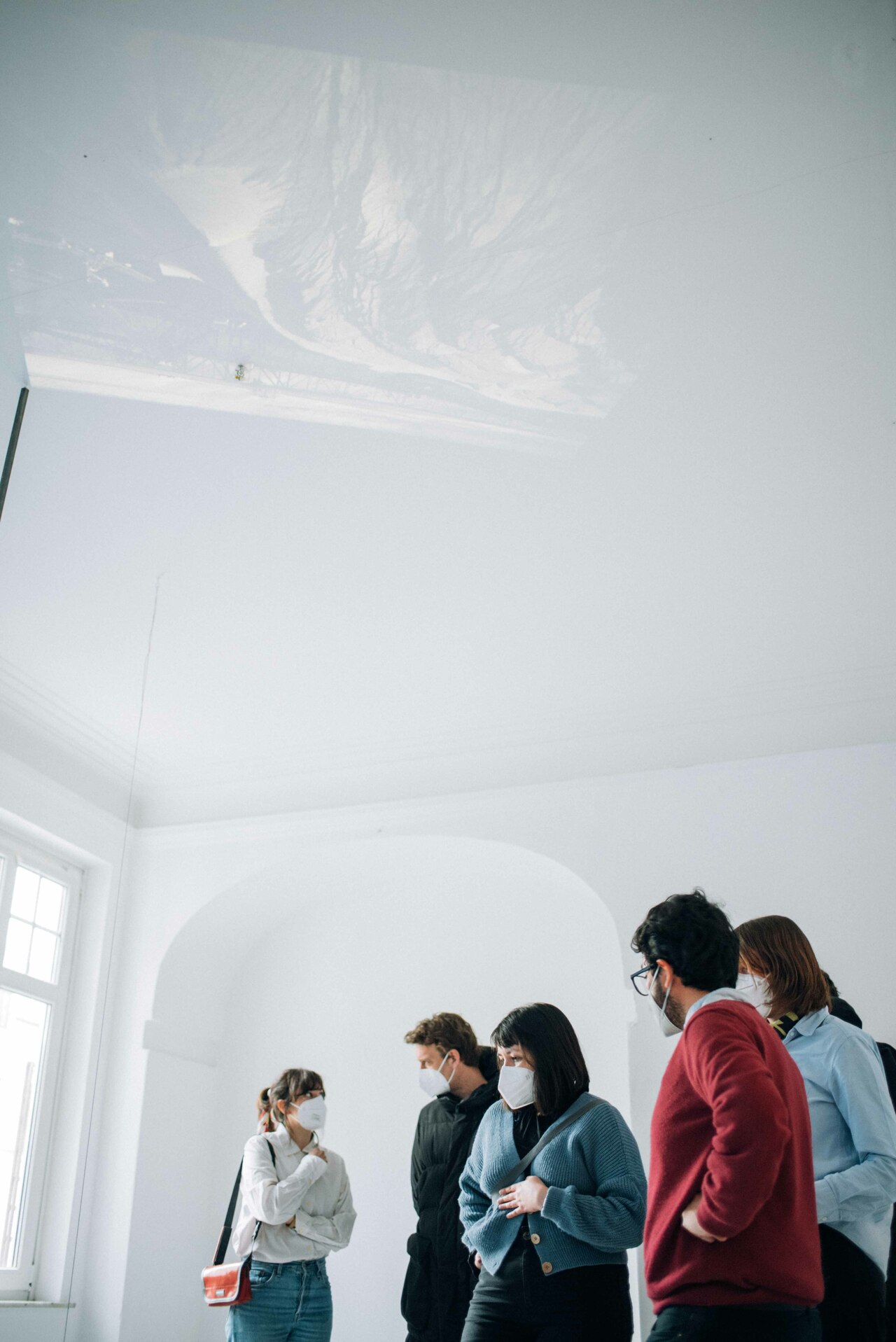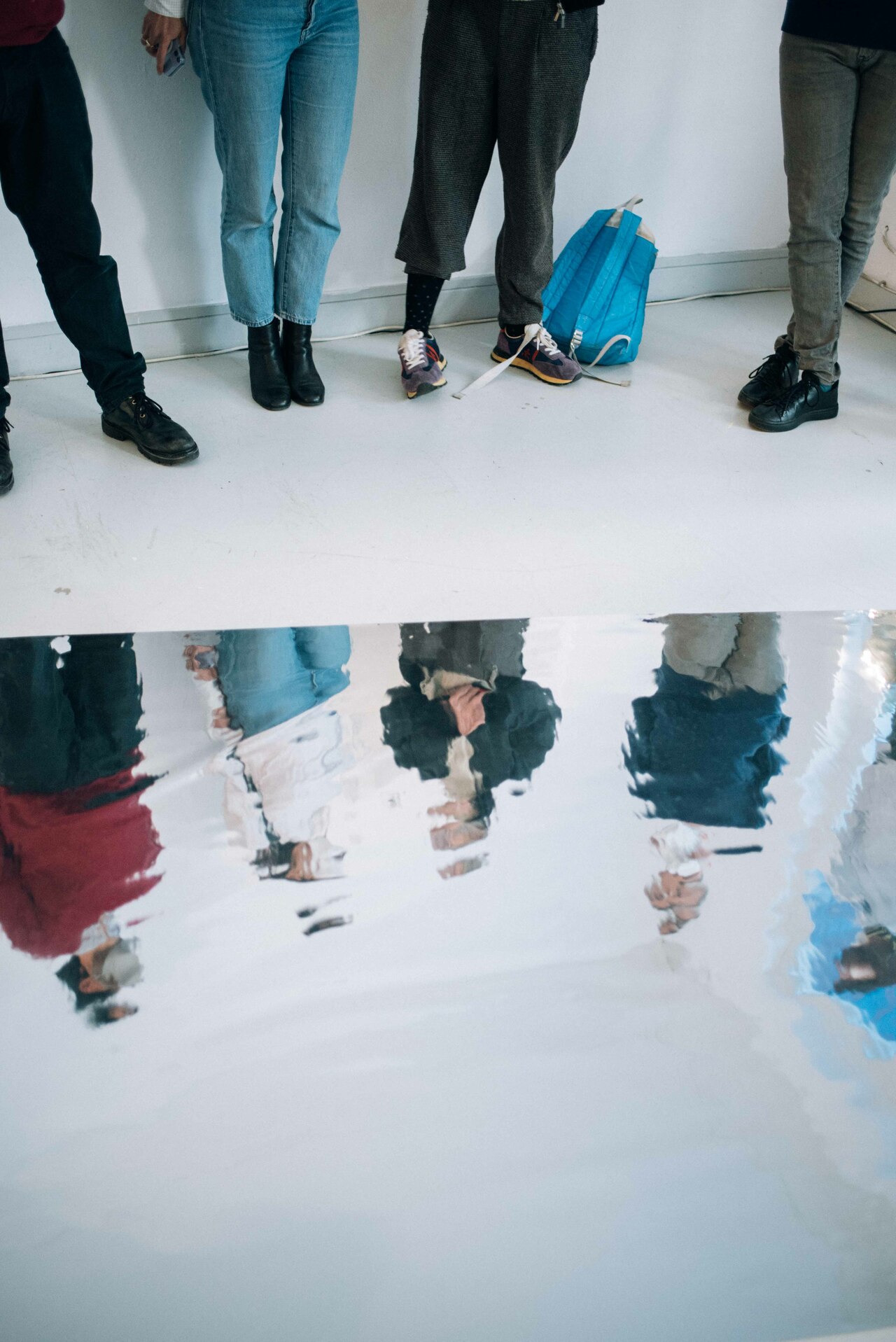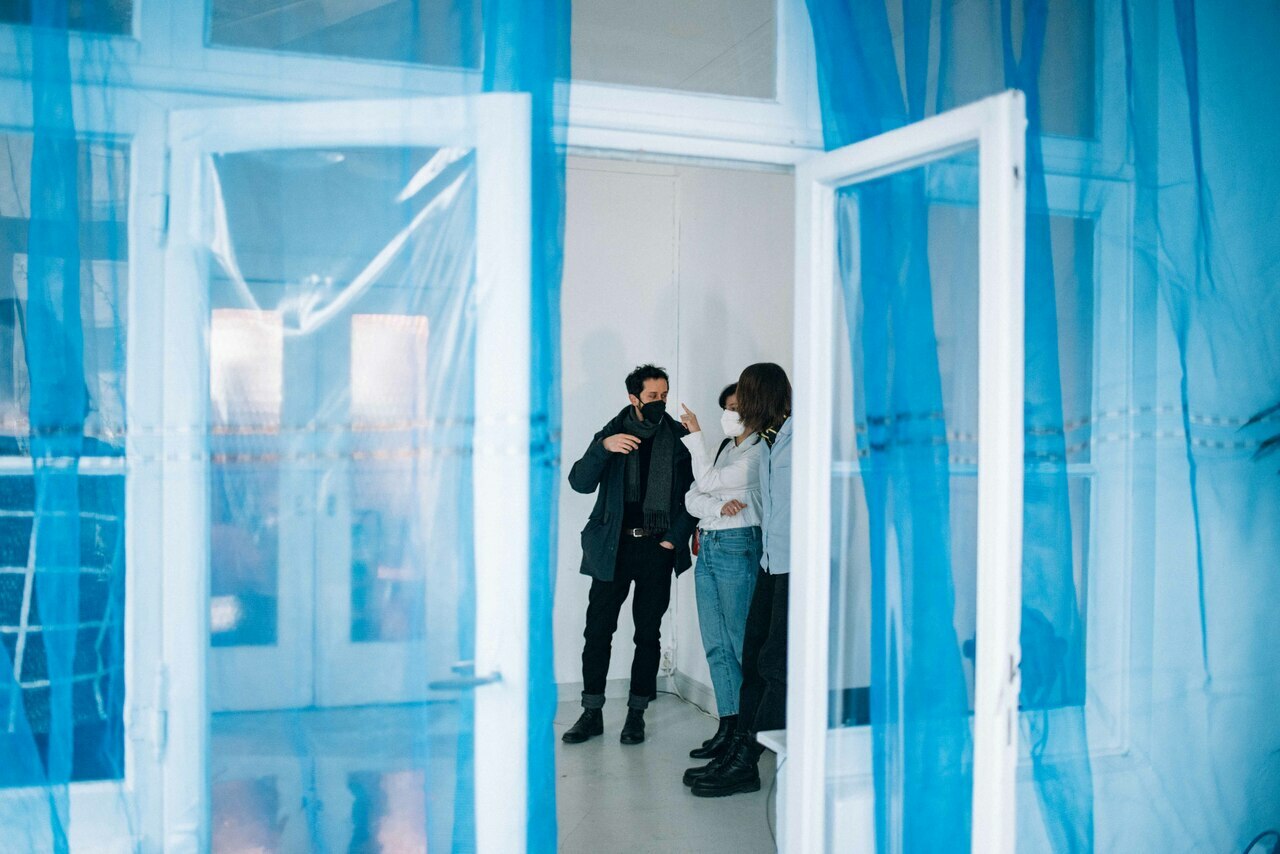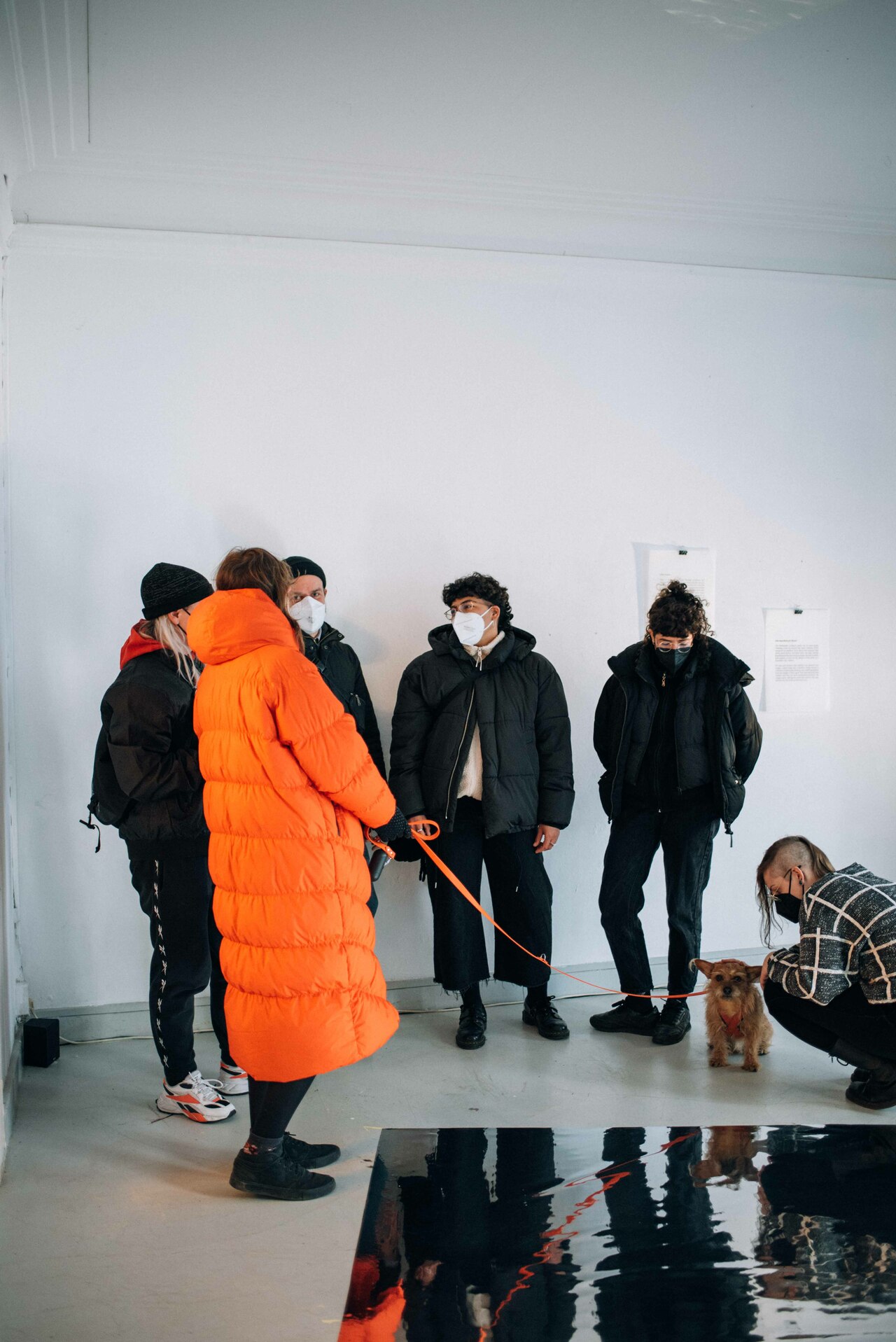From within, from afar, all at once
Ana Filipovic & Luiz Zanotello
During their residency, Ana Filipovic and Luiz Zanotello examined the temporality of the city and the emergent relations between land, earth, living beings, soundscape and landscape. Both artists used collected audiovisual materials of different aspects of such relationships, and presented them in space through different framings. In "The noises of progress" Ana recorded her encounter with the changing cityscape of Bremen through sound. In "New hypothesis for Baucis", Luiz uses the point of departure from a short story from Calvino to intertwine landscape photography and the soundscapes produced by Ana in a time-based installation. Their residency took place from 28 to 31.03.22, and the opening of the exhibition took place on 01.04 at 19:00 and remained on site until 03.04.
The noises of progress
Ana Filipovic
Multichannel audio installation
The act of building, constructive yet violent, usually speaks of progress. Where there is progress, new builds will replace the old ones, and spread out to the un(der)developed land. Nowadays, the progress signified by construction will often remain deaf to the needs of all the others not directly involved in the process, whose voices are not being raised, heard, or sometimes even silenced.
The work will present a collection of sonic impressions from sites of construction in Bremen and document the moment before they descend into permanence. The recordings of these abrupt temporalities chronicle the dynamics of the city in becoming: the sounds of machines, materials applied, manual labor and voices of laborers involved. During the exhibition, sound recordings will be superimposed with the visual recordings of transforming landscapes by Luiz, thus painting a picture of the force behind what we understand as progress.
New hypothesis for Baucis
Luiz Zanotello, 2022
Mixed-media installation
The point of departure for the work is the short story written by Italo Calvino about the city of Baucis. In a city held up high where nothing touches the earth except for its shadows, the inhabitants now look from afar and long in the absence of a land that existed before their memory. The work proposes to shed light in the anthroposcenic relationship between earth and the making of a city. By projecting in time analog photos of a man-altered landscape and its estranged, infrastructural earth on top of a mirrored surface, a liquid landscape unfolds.
The projector exhibits photographs of an open pit mine (Jänschewalde), while the soundscapes of construction sites currently in Bremen alters the speed of the projection. Building a city and altering earth - now only a reflection of memory - happen vis-à-vis, therefore placing the visitors in a new condition of the inhabitants of Baucis and the city's shadows.
"Cities & Eyes
After a seven days’ march through woodland, the traveler directed toward Baucis cannot see the city and yet he has arrived. The slender stilts that rise from the ground at a great distance from one another and are lost above the clouds support the city. You climb them with ladders. On the ground the inhabitants rarely show themselves: having already everything they need up there, they prefer not to come down. Nothing of the city touches the earth except those long flamingo legs on which it rests and, when the days are sunny, a pierced, angular shadow that falls on the foliage.
There are three hypotheses about the inhabitants of Baucis: that they hate the earth; that they respect it so much they avoid all contact; that they love it as it was before they existed and with spyglasses and telescopes aimed downward they nev- er tire of examining it, leaf by leaf, stone by stone, ant by ant, contemplating with fascination their own absence."
- Calvino, I. (1972). Invisible Cities.
New hypothesis for Baucis
The inhabitants of Baucis prefer not to come down. "Nothing of the city touches the earth" (Calvino, 1972) except for its shadows. From above, they examine that which stand bellow and holds their city high. Calvino hypothesized that their distanced gaze was due to either hate, respect, or love for the absence of the earth as it was before they existed. Yet time and distance have diluted such absence into images. Looked long from a distance, earth became a reflection of passionate memory, now indistinguishable from the images of their gaze. They proceed with both wonder and fear, for each examination produces the images anew, altering the earth that exists in the past, and the one that holds present their city.
